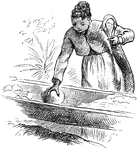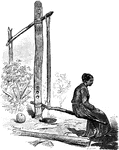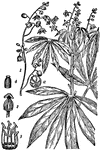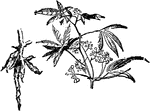Clipart tagged: ‘cassava’

Woman Preparing Cassava
An illustration of a woman filling a tipiti, a plaited cylinder used to squeeze the prussic acid from…

Woman Preparing Cassava
An illustration of a woman sitting on a tipiti. By sitting on the lever the woman is stretching the…

Yuca
The cassava, yuca, manioc, mogo or mandioca (Manihot esculenta) is a woody shrub of the Euphorbiaceae…

